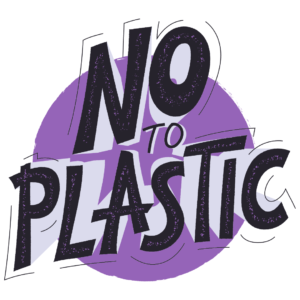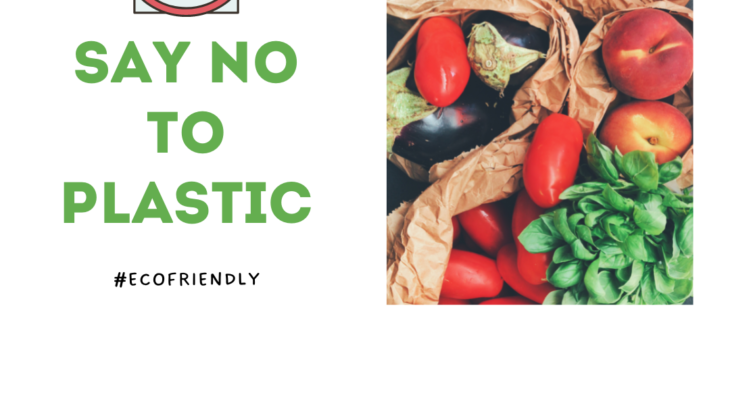Attempting to Live Plastic Free for a Week!
We are two students trying to take (small) steps on the climate situation. So, for one week we set out to try and live without plastic. When plastic is produced, harmful substances are emitted into the atmosphere, also contributing to carbon emissions. But the production of it is not the only problem. What happens when we are done with our single-use plastic? Well, it ends up in the oceans, is buried deep underground, or is shipped off to countries where it is burned. Most of us are aware of how harmful plastic can be to our environment. Still, for our convenience we continue to purchase products packaged in plastic. Here is our experience trying to live without plastic, for one week:
Q1: Before you started on this challenge, you probably still had some items (food or otherwise) that were packaged in plastic. Before you got started on the challenge, what did you do with that?
Answers:
– Well, it would definitely be counterproductive to get rid of those items. So, what I did instead was use up everything I had that was plastic wrapped, and when the item finished I replaced it with non-plastic items. For example, when my conditioner bottle was emptied I replaced that with a conditioner bar. For food, when I finished my (plastic-wrapped) lentils, I went to the Gieterij (plastic-free store in Wageningen) and filled up a glass jar with that instead.
– I had the same line of thought, so I also first used up everything I still had in my house before replacing it with the non-plastic products.
Q2: Have you ever done a package-free challenge before (if yes, what did it entail)?
Answers:
– I have never, so I thought this would be a nice challenge to start with!
– Yes, once I made an attempt to live plastic-free for a short while, just to see what that’s like. I was inspired after watching a Youtube video by Lauren Singer (founder of the “Plastic Free Shop” and “Trash is for Tossers” blog). This was a couple of years ago, so at the time Wageningen did not have a plastic-free store yet. I was looking at swaps for my everyday plastic items (see this blog for swaps!). I remember it was really difficult for food though. And sometimes things were more expensive when packaged in paper rather than in plastic as well (rice for example).

Q3: What was most difficult about trying to live plastic-free this week?
Answers:
– I thought it was difficult that you have to think and prepare a lot more before you go shopping. It takes quite some knowledge and time, but I also saw this as a nice way for me to learn more about the diversity in options to live plastic-free and the possibilities Wageningen has to offer! However, when I did this challenge we were still in a hard lockdown so that made things a bit more complicated… Another thing is money; some items are a bit more costly when you buy them plastic-free. However, in some cases this also was the opposite (when you go to the market for instance) so I think you just have to learn little by little about the places where you can best buy certain products.
– Well, I did the challenge at the beginning of the year… I thought it’d be nice to start the year off right, but I didn’t keep in mind that all the stores would be closed. When I needed items replaced with plastic-free alternatives I couldn’t so I simply couldn’t get all the things I needed. It also took a lot of time and preparation right at the beginning. But once you know where you can get the items you need it isn’t much of a problem. For instance, I waited to get my fresh fruits and vegetables at the Wednesday and Saturday market. That saved me a lot of plastic (and money!).
Q4: What plastic lifestyle items that you usually used did you replace with non-plastic alternatives?
Answers:
– I replaced my shampoo bottle with a shampoo bar and started buying my vegetables at the market instead of the supermarket (it’s almost impossible to for instance find a cucumber not wrapped in plastic at the supermarket!). Besides that, I started buying more food products packaged in cartons and jars and for instance replaced my milk, that I normally buy with a plastic twist-cap, with milk that has a pouring opening. I also started to be more mindful and rethink other moments that I normally potentially would use plastic for packaging while there are many other options (for instance when preserving pancakes in the refrigerator for the next day I was first tempted to put cling film over it, but then I thought: Hey, I can also just put a plate on top of it! :).
– I replaced most of the bottles in the shower, including shampoo, conditioner, and body soap. I also replaced my plastic toothbrush with a wooden one. My floss is now compostable, refillable and packaged in a glass tube. Also, I now refill a lot of spices at the Gieterij and put that in jars that I re-used (peanut butter jars, for example). And instead of buying a lot of different cleaning products, I tried using vinegar and baking-soda for a lot of cleaning. It seems to work really well so far (plus you can make your own apple-cider vinegar really easily by using apple scraps).
Q5: What plastic items do you think you still cannot live without?
Answers:
– Mostly certain personal care products, since my skin is quite sensitive and it’s hard to find good replacements. Also, I became more aware that when you order take-out it comes with a lot of plastic, which unfortunately is hard to get rid of. Other huge plastic-containing products are of course covid tests, which for medical reasons need to be, at least for a large part, packaged in plastic. However, I did find certain ones in which the outer packaging was carton instead of plastic. Also, I made sure to keep all the little plastic bags to reuse them for a later moment. I did the same with plastic packaging that came when I ordered something online.
– For me, I think skin care is still hard to find plastic-free. There are some good brands on the market now, but I am allergic to many items so I still use face wash and creams that are packaged in plastic. I am more conscious of trying to find things that are in glass jars though, so I hope that helps a bit.
Q6: How did the people around you experience it?
Answers:
– With it being lockdown, it wasn’t too bad because I wasn’t cooking for a lot of different people. However, I think during a more “normal” time it would have been quite challenging to find enough (cheap) food products to host meals. When it comes to household items I don’t think it was annoying for those that came to my house. I still had everything I needed, just with less plastic trash.
– I had the same experience! With it being a lockdown and Christmas break the circumstances made it easier, since it didn’t affect many people.
Q7: How did living plastic-free affect your eating?
Answers:
– I think it made me eat more home-made and healthier. Because certain products are only available to buy in plastic (or I could only find them wrapped in plastic) I was then looking at how I could make it myself. Also, I ate more fruits and vegetables.
– If anything, I think it helped me eat healthier. Many foods are packaged in plastic so I ate a lot more fresh vegetables, fruits and legumes than I usually would. It was sad not to be able to buy most of my meat-alternative products though as I do like those a lot. Also, one thing I did not try to avoid was my plant-based milks as I do use that for a lot of things like oatmeal and in coffees/teas.
Q8: Do you have any (other) tips for other students that want to try to live plastic-free?
Answers:
– I think my tip would be not to try to do it perfectly. Just replace the items that are easy to replace, and be more conscious of the amount of plastic you use on a day-to-day basis. Try to buy your fruits and vegetables at other places than the supermarket also really helps. You’ll find it is really satisfying when you notice how much less trash you produce!
Living plastic-free in Wageningen
- Go to the Gieterij! See what items you can buy from there, and bring enough jars and reusable cloth bags.
- You can also go to Odin. This is a biological supermarket. A lot of items they sell are not plastic packaged.
- You can also shop online at Miisha.nl. Their items are sent using the Fietskoerier (by bike) so it is a much more sustainable option than shopping elsewhere.
- Buy things second-hand. On Wageningen Student Plaza (Facebook) you can find lots of second hand items for a good price.
Conclusion:
To live a more sustainable lifestyle you do not necessarily have to make your life hard. Some of these changes that we mentioned are simple and cost-effective. Whilst reducing the amount of plastic you use is nice, there are also some other considerations. For instance, this article by de Volkskrant (in Dutch) wrote about how much heavier cartons are than plastic and how that can end up causing more carbon emissions. So when it comes to your lifestyle, try and reduce plastic when you can, but don’t worry – you should always make the choice that is right for you (and the environment).
By Lisa and Nathalie
